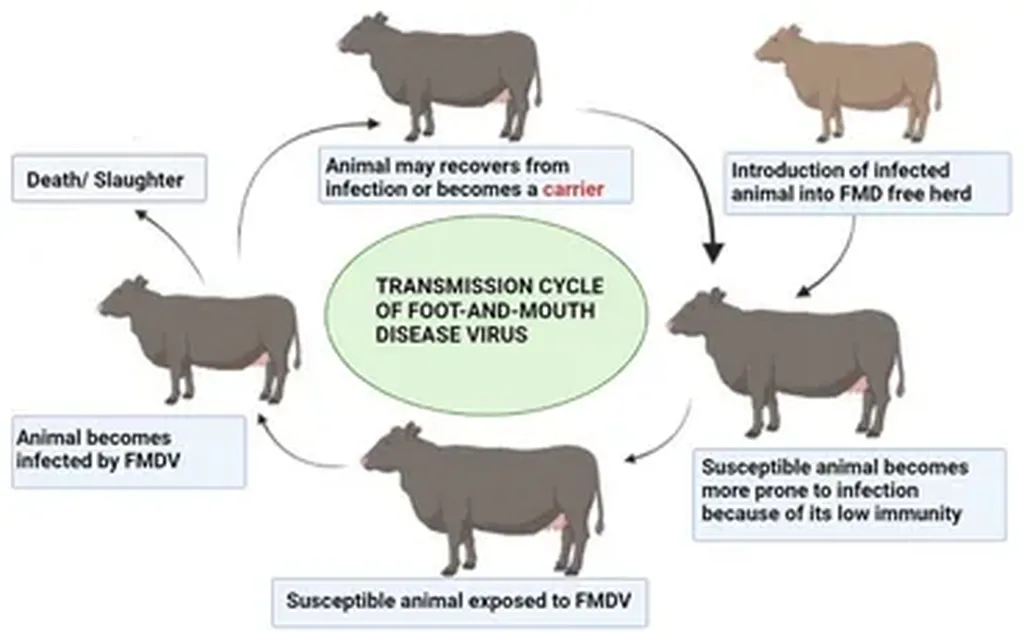In the heart of Bangladesh’s Manikganj district, a silent battle is being waged against a formidable foe: the Foot-and-Mouth Disease Virus (FMDV). This insidious virus, a scourge to cloven-hooved animals, has long plagued the country’s livestock, stifling economic growth and development. Now, a team of researchers led by Md Zulfekar Ali from the Animal Health Research Division of the Bangladesh Livestock Research Institute has shed new light on the virus’s evolution, with potentially significant implications for the agriculture sector.
The study, published in the Macedonian Veterinary Review, focuses on the molecular characterization of the emerging sublineage Ind2001e of FMDV serotype O in buffaloes. Buffaloes, a vital livestock resource in the southern coastal region of Bangladesh, are often overlooked in favor of cattle, but this research underscores their importance in disease management.
The researchers collected tongue epithelial tissues from two buffaloes suspected of FMD in June 2018. Using RT-PCR testing, they identified the virus as FMDV serotype O and cultured it in a BHK-21 cell line. Phylogenetic analysis of the VP1 region revealed that both isolates clustered into a distinct sublineage Ind2001e, within the dominant lineage Ind2001 of the Middle East-South Asia (ME-SA) topotype of FMDV serotype O.
“This is a significant finding,” says Ali. “It shows that the virus is evolving, and we need to be vigilant in our monitoring and control efforts.”
The nucleotide similarities between the isolates were high, with 92.38% homology. However, the similarities with the Indian and Nepal sequences were even higher, at 99.91%-99.99% and 99.90%-99.99%, respectively. This suggests that the virus is not only evolving but also spreading across borders.
The amino acid mutations within the VP1 sequence between the vaccine strain (O/India/R2/75) and the BAN450 isolates were also notable, with a 3.75% difference (96.25% homology). These mutations were specifically found in the BC loop and C-terminal region, which could have implications for vaccine effectiveness.
“This research highlights the importance of continuous monitoring and adaptation of our control measures,” says Ali. “The virus is constantly evolving, and we need to stay one step ahead.”
The commercial impacts of this research are significant. FMD is a major economic disease in endemic regions like Bangladesh, affecting livestock production and hindering development. Good farm practices, including vaccination, are currently the only effective control methods. However, the emergence of new sublineages and the potential for reduced vaccine effectiveness pose a significant challenge.
The research also underscores the importance of buffaloes in disease management. Buffaloes are often more susceptible to FMD than cattle, and their role in the transmission and evolution of the virus cannot be overlooked.
Looking to the future, this research could shape the development of new vaccines and control strategies. The identification of specific mutations and their potential impact on vaccine effectiveness could guide the development of more targeted and effective vaccines.
In conclusion, this research is a crucial step in the ongoing battle against FMD. It highlights the importance of continuous monitoring, adaptation, and innovation in our control efforts. As Ali puts it, “We need to stay vigilant, stay informed, and stay one step ahead of the virus.”

